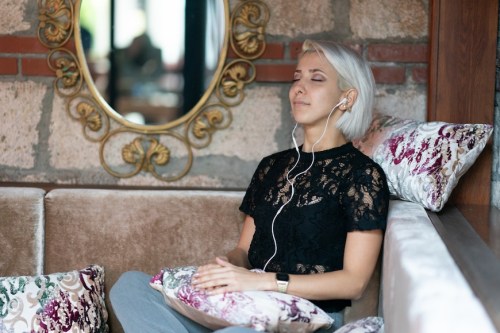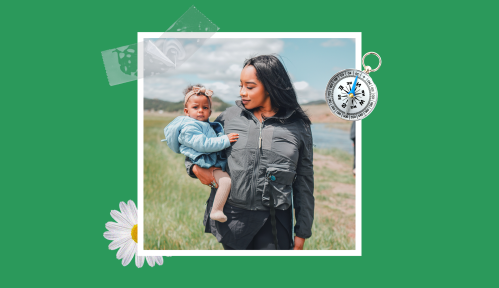Here’s the best music to enhance your meditation—and not totally distract you
Get tips on using music for meditation, including how to pick a soundtrack that will enhance your practice, and not distract from it.

ICYMI, pretty much everyone is anxious and stressed the F out. In a reader survey conducted by Well+Good, 95 percent of participants say they struggle with stress, and 92 percent say they struggle with anxiety.
So it’s not a big surprise that more people are seeking out meditation and mindfulness—both of which are well-documented at helping relieve stress and anxiety. According to data released from Google, search interest in mindfulness increased by over 430 percent since 2004, and searches for meditation music is up over 500 percent since 2004.
However, while your ’90s playlist may help you crush your long run, but chances are that pump-up music isn’t exactly going to help you focus on your breathing. So if Backstreet Boys are out, what will work?
Before you pick out your meditation soundtrack, it’s good to know when it’s actually helpful to incorporate music, versus when it’s better to sit in silence. According to Angelika Alana, an expert for meditation app Happy Not Perfect and a mindfulness and strategy coach to millennials, it totally depends on your personal preference. “When it comes to meditating, the challenge most people tell me they’re facing is simply starting or sustaining a practice,” she says. “So, the most important thing is that you find the practice relaxing. If that means music, go with it. If that means silence, go with that. There’s no right or wrong here.”
That said, Alana does say there are certain times when music really can enhance your practice, such as if you’re meditating somewhere loud and busy (airport pre-boarding meditation, anyone?). Music can help drown out those other noises and bring your focus inward. “The idea of meditation is to withdraw the senses from the outside world to focus on your inner world and through that focus, create a singular point of concentration,” she says. “Here is when many teachers suggest focusing on the breath, but focusing on music can do the trick, too.”
Alana also says you can also use music to help set the mood for your practice. For example, if you always queue up the same song every time you’re about to start meditating, it will serve as a signal that it’s time to start relaxing and focusing inward. “The music becomes part of the habit much in the same way other types of music might motivate you on your morning run,” Alana says.
5 picks to start incorporating music into your mediation practice
If you start Googling around for meditation music, you’ll find that there are different styles to pick from including instrumental, chanting, and ambient noise (like waterfalls). Alana’s tip for choosing between them: experiment! “Try them! I always tell clients it’s much less about getting it ‘right’ and much more about creating space in their lives for habits that support relaxation and facilitate their wellbeing,” she says. “So, look at it like a dating game with wellness practices. Explore them with curiosity and find what works. Use that until it doesn’t and then explore some more because like any relationship, the one with ourselves has gotta’ be kept fresh, too!”
If you have no idea where to start, try one of her top picks below:
Binaural beats is when the beat a person hears in their left ear is a different frequency than what they hear in their right ear. It’s been linked to relaxation and lowering anxiety.
2. Delta Waves for Deep Healing Sleep
Another binaural beats playlist option, this soundtrack is geared not only for meditation, but also encourages deep sleep. Talk about a win-win.
3. “108 Sacred Oms” by Jason S. Mckean
This soundtrack is helpful if you practice chanting meditation, and want cues to lead you throughout your meditation.
This eight-and-a-half minute track can help induce a calm for a short meditation practice, encouraging a slower breathing pattern and decreased heart rate.
5. “On The Nature of Daylight” by Max Ritcher
A soundtrack of contemporary classical music that will give your practice all the chill vibes you’re looking for.
Regardless of the soundtrack you select, you should leave your meditation practice feeling both calm and rejuvenated. It may take some experimenting to figure out which style works best for you, but once you pinpoint which one works for you, it could be just what you need to take your practice to a whole new level.
If you’re new to meditating, check out these five tips for beginners. And here’s how to figure out the best meditation style for your personality.










